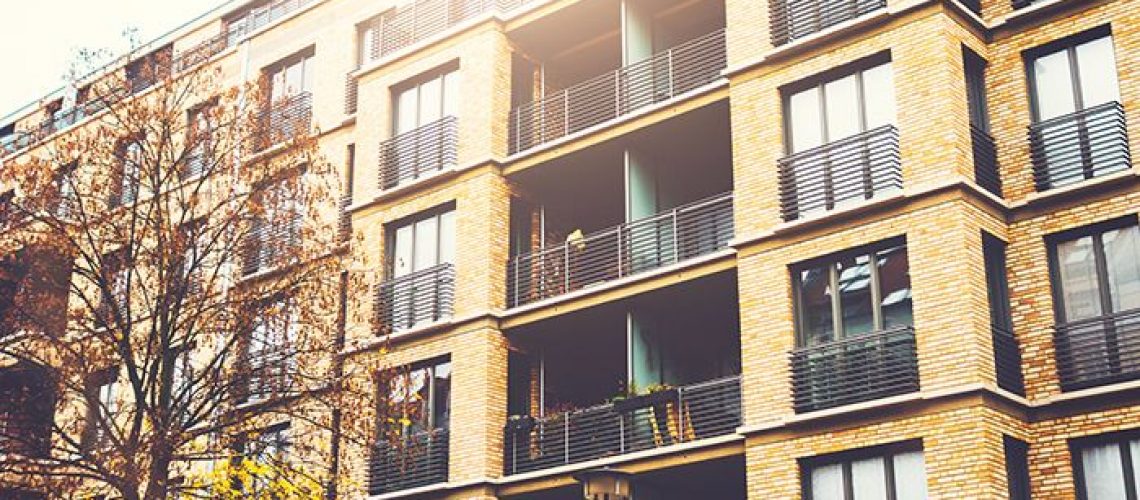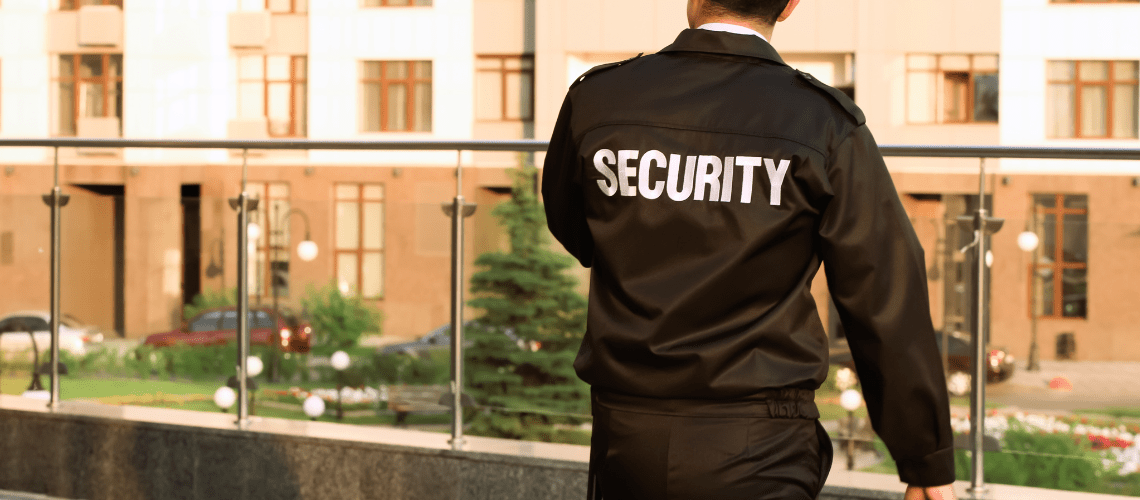Not Just for Schools: Evaluating Lockdown Systems for Residential Communities

While we focus much of our attention as a company on school lockdowns and securing our nation’s schools; places of worship, government buildings, office complexes, and residential communities have also become threats of those wishing to do harm to others. Those in charge of these facilities need the ability to lock them down when necessary, and the understanding of how best to implement strategies to keep their occupants safe should a lock down occur. In this article, we’ll focus on evaluating lockdown systems and procedures for residential communities, which can include various locations including apartment and condominium complexes, retirement facilities, hotels and resorts, residential healthcare, and student housing. These locations present unique opportunities to keep residents safe in the event of a threat such as an active shooter, and many processes can be implemented that increase overall safety as well.
Background
Due to the diversity of locations considered to be residential in nature, ascertaining statistics on shootings in residential facilities is challenging. However, according to FBI statistics, potentially 5-10% of mass shootings from 2000 through 2017 took place at some sort of residential environment. Shootings and killings at residential facilities pose a unique challenge in that many of the targets of these crimes are an individual or small group that often do not have time to identify that they are in danger.
Stopping these crimes can be incredibly challenging and is not the primary task of a lockdown system, however, if targets of these attackers have the ability to shelter in place, and a lockdown system is activated, their lives can potentially be saved, and it is possible to give advanced warning to others in the complex that an active threat exists so they may also protect themselves. In this case, an alert and lockdown system becomes a vital instrument in preventing loss of life in an active shooter or threat scenario.
Commonalities in Residential Communities
There are many types of residential communities, but regardless of type, most share some common traits. These facilities often have some form of welcome and check in area for residents and visitors, various common areas, multiple floors, and large hallways with individual rooms separated by exterior doors that provide a single access points to the homes of residents. Most also have some form of security guard, or at least share a security officer with nearby buildings. One of the key points of strength for these facilities is the doors to the residences themselves. Similar to planning for school lockdown system implementation, the primary focus of residential lockdown planning must be for residents to exit hallways and common areas as quickly as possible and move to their rooms (retirement homes, student housing) or homes (condos, apartments) as quickly as possible, lock them down, and shelter in place.
Proper planning and preparation must be taken to account for the potential need to lock down large common areas as well, but as a norm, these areas are much more difficult to secure than individual living areas. Providing a physical lockdown device for each room, and common area doors, as well as a clear lockdown indication system, can help residents quickly move from less secure open spaces to secure rooms in the event of a lockdown. This strategy also helps staff secure themselves if a worst-case scenario occurs. The ability to lock down leasing offices, kitchen areas, janitorial staff rooms, and bathrooms creates vital shelter points for those who may not have the opportunity to reach an individual living space.
Physical Door Barricades
There may be some who ask, “Isn’t it enough to just lock my doors if something bad happens?” While the ability to get into a room and simply lock the door can provide some protection, as the Fort Campbell shooting in 2018 showed us, sometimes a locked door isn’t enough. According to a friend of the victim, Army Sergeant Brittney Silvers, the perpetrator, Victor Silvers was able to “burst through the door” and access the apartment to shoot and ultimately kill Brittney. There are further cases of violence in residential communities, and single homes, where the attacker is able to break through a door and cause harm to the victim.
With a secondary barricade device in place, which may seem like excess protection to some, these tragic events can potentially end without the attacker gaining access to their target at all, and eventually giving up on their assault. No protective system is perfect, but the ability to provide vital minutes to potential victims as first-responders arrive to engage an attacker can be the difference between life and death in these situations.
Alert and Response Systems
Residential lockdown systems that are integrated with alerts for both the complex at which they are installed, and for police dispatch provide two primary advantages for those living in the communities.
First, if a lockdown is initiated, all residents, staff, and visitors are warned via auditory and visual indicators that a lockdown is in progress, and they are able to place their secondary door barricade in place, likely stopping any would-be intruder from entering their residence.
Second, police dispatch is immediately notified that a full lockdown has occurred at the complex, and can see from location information where the lockdown was initiated. Systems can be triggered in several ways, be it removal of a door barricade from it’s holder, gunfire, police dispatch due to a violent event nearby, or through a mobile app.
All of these initiators can provide location information from the trigger event This information can be critical in tracking down a threat. Further, if the complex administrators and lockdown system providers have been communicating correctly with police, and leveraging their expertise in designing a building identification system, then police arriving on scene first will have the opportunity to both quickly identify the threat location, and plan the most efficient route to intercept them.
“A big part of what we do is communication”, says LockOut Company President Rob Couturier, “One of the key functions that we saw as lacking with barricade devices was the fact that no one knew when they were deployed, and there wasn’t anything helping police find the people who were locked down. We wanted to change that, which is why we added the communication pieces to The Boot™ and created the SmartBoot System.”
By giving residents, staff, and visitors the chance to protect themselves in a lockdown, deterring attackers from accessing potential victims, immediately alerting law enforcement of the lockdown, and giving them the means to rapidly identify the attacker’s location and intercept them, lockdown systems shift the advantage away from an attacker who is relying on chaos, and provides the means for potential victims to protect themselves in a terrifying situation.
Planning & Preparation
As we’ve installed more and more SmartBoot Systems, we’ve learned that no matter how large, or small, the facility, an instantaneous alert system is vital to saving lives in the event of a lockdown. Most places of worship, as mentioned previously, are more communal areas, but also have many halls and rooms separate from the main areas. These halls and rooms often mean unsecured entrances where a threat has the opportunity to enter and make their way through the building. With an alert system in place, such as the SmartBoot system, if anyone in an adjacent area triggers the system, the entire building is alerted immediately, which may allow the main hall to get their door barricades in place, and stop the threat from reaching their intended target. This is just one application of an alert system in a place of worship. Instant communication of a lockdown event with police dispatch and the ability to further communicate directly with police after a lockdown is triggered, police dispatch having the ability to trigger a lockdown if a dangerous event occurs near the place of worship or a threat is made, the ability to trigger a lockdown by removing a door barricade device from its container, as with The Boot and SmartBox, triggering a lockdown from an app if a threat is recognized, or a system trigger due to gunfire, can all allow for increased time for those in danger to get to safety, and reduce time for an attacker to harm others. In a lockdown scenario, especially one involving an active shooter, time can be an important ally.
Planning & Preparation
Without planning and preparation, no system will be as effective as possible. Below you’ll find some material with which to start the lockdown planning process. This may look familiar if you’ve read our article Not Just for Schools: Evaluating Lockdown Systems for Government Facilities, but these planning procedures can be very effective for residential communities as well.
We base our planning from communication with police and first-responders, as well as A.L.I.C.E. training protocols. While neither us, nor the groups that created them, can guarantee the effectiveness of the programs, here are two documents provided by government organizations that help get started in your planning process:
We have also covered some planning procedures in our other articles, here are links to two of these articles to get started:
- When It Comes to a School Lockdown, Have a Plan, Not Just a System. This article is based on school lockdown planning, but is applicable to any type of facility or complex.
- 7 Steps to Keep Schools (and Other Buildings) Safe
While no plan is perfect, using resources such as the ones above can be a great beginning to your planning process.
What's Next?
While mass shootings at residential communities are less common than many of the other threats we face, they still occur, and many shootings that take the lives of one or two individuals do occur frequently at these facilities. Protecting yourself or your residents, staff, and visitors is the right thing to do, so we urge anyone who may act as an administrator for one of these facilities to begin the learning process and start researching safety, security, and lockdown procedures that may work best for you. Contact local law enforcement, reach out to a lockdown system provider, and understand that preparation is something that is only effective if it occurs before a tragic event.


